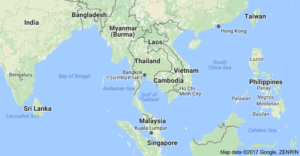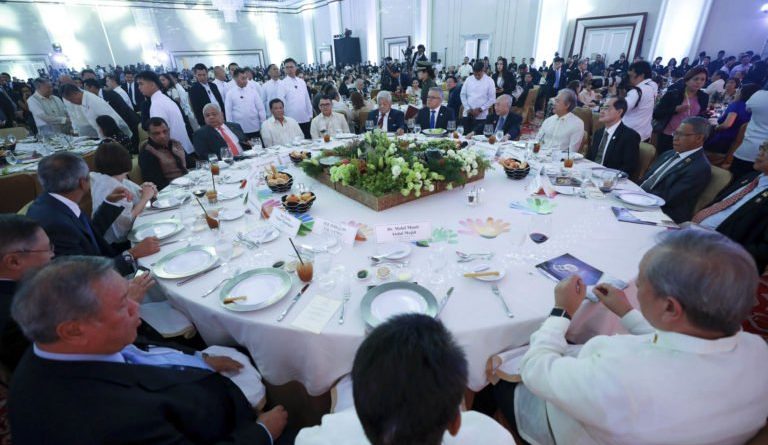ASEAN-Business: More Asean cross-border partnerships
(First of three parts)
.
Nearly half of CEOs in the Philippines are keen on expanding to overseas markets, riding on the opportunities offered by Southeast Asian economic integration even as low-hanging fruits abound locally.
But instead of leaping into a new jungle as a lone wolf, finding a reliable native partner is becoming the preferred strategy, in the same way that some Philippine companies have teamed up with foreign investors on their home turf. Local expertise is invaluable, both from a business development and risk management standpoint.
<.>
ADVERTISEMENT: This space is reserve for your Ad, contact aseanews.net now!
<>
In the 2017 CEO survey conducted by PwC/Isla Lipana for the Management Association of the Philippines, 75 percent of the corporate leaders said they would likely enter into partnerships, while 45 percent said they were bound to compete in new offshore territories.
And when these CEOs say “offshore,” what’s immediately on their radar is the Asean neighborhood.
The PwC research, now in its third year, is an annual gauge of business sentiment.
For this particular year, however, PwC highlighted the growing collaboration and building of cross-border partnerships within the 10-member Association of Southeast Asian Nations (Asean), home to more than 600 million mostly young people whose per capita incomes are improving, creating an attractive consumer and labor pool.
In 2015, the group officially created the Asean Economic Community, a region where goods and services are freely traded, where investments are welcomed and encouraged, and where professionals and skilled workers are able to cross borders and practice their profession with greater ease.
Engaging the world
Incidentally, the Philippines chairs Asean this year as the regional bloc celebrates its golden anniversary. This year’s theme is “Partnering for Change, Engaging the World.”
Asean includes countries with higher per capita income, such as Singapore and Brunei, and middle-income economies, such as Indonesia, Thailand, Malaysia, the Philippines and Vietnam. There are also the three new frontiers: Myanmar, Laos and Cambodia.
At 45 percent, the percentage of CEOs scouting for opportunities outside the Philippines declined this year from 56 percent in the 2016 survey.
<>
<>
PwC said this was because many of the corporate leaders were devoting more resources locally given the promise of President Duterte—the first president to hail from Mindanao—to usher in a “golden age of infrastructure.”
Mergers and acquisitions
More corporations are gaining more confidence to pursue mergers and acquisitions (M&As) in foreign markets but they are still outnumbered by those that prefer partnerships or strategic alliances.
About 30 to 34 percent of CEOs said they were keen on M&As this year, up from last year’s 17 percent.
Based on the PwC research, tapping new markets, acquiring new customers or distribution networks as well as gaining access to better technology, talent and more resources motivate companies to scout for cross-border deals.
PwC’s latest survey covered 120 CEOs, 69 percent of whom came from medium to large corporations.
Finding a suitable partner is never an easy task, especially when entering a foreign territory.
“As the relationship requires sharing of resources and risks, trust is an important ingredient in a partnership. Well-articulated plans, clear roles and responsibilities and fair allocation of risks and rewards should be tabled at the outset,” said Mary Jade Divinagracia, PwC Philippines managing partner for deals and corporate finance.
Ayala experience
“We knew that the learning from Manila Water was going to be something that can be replicated in other similar cities in Asia, where there’s (big disparity between) the rich and poor and where there’s problem with water supply,” said Rene Almendras, head of AC Infrastructure, former head of Manila Water Co.
“So the next step is to identify which cities would give you the most (upside). Then the next question is: Is there somebody in that city that shares your value structures, the way we do things, that interests us?” Almendras added.
Manila Water was contracted in the mid-2000s to plug pipeline leaks in Vietnam and has since then found opportunities to invest in a couple of water treatment plants as well as water distribution.
The company has since then invested around $100 million in Vietnam’s water sector, making it a leading foreign investor in this space.
The holding company for its international ventures is Manila Water Asia Pacific Pte. Ltd. (MWAP), which has two affiliated companies in Vietnam—Thu Duc Water B.O.O Corp. and Kenh Dong Water Supply Joint Stock Co. Both companies supply treated water to Saigon Water Corp. under a take-or-pay arrangement.
Also under MWAP are Saigon Water Infrastructure Corp., a holding company listed on the Ho Chi Minh City Stock Exchange, Cu Chi Water Supply Sewerage Co. Ltd. and another company tasked with pursuing nonrevenue water reduction projects in Vietnam called Asia Water Network Solutions.
In the case of Manila Water, Almendras said the Asian Development Bank was instrumental in finding a suitable local Vietnamese partner.
Energy business
Energy is another business that the Ayalas want to bring to overseas markets, particularly in Indonesia and Vietnam.
AC Energy president John Eric Francia said the group’s goal of building a 2,000-megawatt portfolio by 2020, double the current level, would be partly driven by new projects across the region.
AC Energy recently teamed up with Star Energy Group in a successful bid to acquire Chevron’s geothermal assets in Indonesia while it also partnered with UPC Renewables to fund island energy development projects.
“Vietnam has double-digit demand growth. Their reserve margin is quite thin so you can imagine the urgent need to build more supply, and everyone is pushing for renewables,” Francia said.
Compared with the Philippines, Indonesia and Vietnam were relatively new in terms of pushing for solar and wind energy sources, Francia said.
In May, Vietnam announced its feed-in-tariff (FIT) regime for solar energy. For Francia, this is an opportunity for AC Energy.
Moving forward, the Ayala group may start doing more business in Vietnam on the infrastructure side, Almendras said. Potential partners have approached the group.
“They like our experience in rail. Ho Chi Minh is trying to fix its traffic problem and trying to fix its road network. There’s a new city being developed,” he said.
(To be continued)
(Editor’s Note: This feature was produced as part of the Reporting Asean program (www.aseannews.net), hosted by Probe Media Foundation Inc. with the support of the Asean Foundation.)
Courtesy: The Philippine Daily Inquirer | By: Doris Dumlao-Abadilla – Reporter / @philbizwatcher / 07:21 AM November 07, 2017
>
>


NOTE : All photographs, news, editorials, opinions, information, data, others have been taken from the Internet ..aseanews.net | [email protected] |
For comments, Email to :
Pahulu Gan – Contributor | [email protected]









